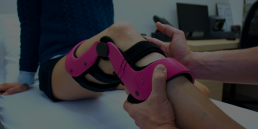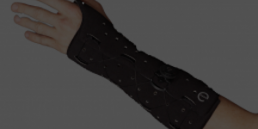For bone fractures, a cast is usually moulded around the fractured limb to immobilize it during healing. However, in some cases, there may be more practical alternatives to plaster for treating bone fractures. Customized solutions for fractures exist in orthopedic clinics. Here is an overview of the benefits of orthopedic appliances and orthopedic services in Montreal and Sherbrooke.
What to Do After a Bone Fracture?
Fractures are not always as easy to identify as one might think. In addition tof pain, a symptom that varies greatly from one person to anotherl, a fracture can be identified by swelling, bruising, hematoma formation, bone dislocation, deformation and displacement of the limb,b numbness in the limb, or by the inability to move the affected limb.
Treatments for the majority of fractures are aimed at reducing pain and completely immobilizing the affected bone, hence the frequent use of plaster for bone fractures. For serious cases, surgery may be necessary, followed by rehabilitation sessions in orthopedic clinics to regaine normal function in the joints.
Since most fractures are caused by falls and accidents, it is difficult here to talk about prevention techniques other than wearing protective gear when practising unsafe sports, or orthopedic devices if an injury occurs or has already occurred in the past.
Advantages and Disadvantages of Plaster Casts
Plaster is the traditional treatment for bone fractures in orthopedic clinics. It has long been the most advantageous option, due to how easy it is to make and its low cost. In addition, most people have good tolerance to plaster and allergies to it are very rare. Finally, this treatment reduces the risk of infection and has more aesthetic results compared to surgical treatment.
However, there remain serious drawbacks of using this technique. Discomfort due to adjacent joint immobilization can be great, especially in the elderly. It is also a relatively imprecise technique that can allow movement under the cast, in addition to abrading the skin and making it difficult, when using radiography, to measure the bone healing progress.
Other Solutions
Some alternatives for treating bone fractures have been developed in recent years in orthopedic laboratories. Resin strips, which are more expensive, harden faster than plaster and are water resistant. However, despite the change in material, the idea of having to immobilize the limb remains the same. Some alternatives offered by orthotists in Montreal and Sherbrooke allow more freedom of movement.
A wide variety of orthopedic devices are available for different types of injuries. For example, walking braces are used to stabilize the foot while allowing walking. Orthotics for the knee, ankle, or leg offer more options adjust the knee deflection angle. Orthotics made in orthopedic laboratories and 3D orthotics are now offered in Sherbrooke for incomparable comfort and optimal efficiency.
In all cases of injury, it is very important to use the right brace for treatment. Our experts at EVO lab are all orthopedic graduates and will advise you to find the best orthotics fora total recovery.
Share this article
Related posts
December 6 2019
Orthosis for knee osteoarthritis treatment
July 12 2018
Is There an Alternative to Plaster for Bone Fractures?
As plaster casts hinder everyday life, what are the alternatives...
April 14 2018
New Treatments Against Osteoarthritis
Unsteadiness, vertigo, persistent sensation of fall, these symptoms are often the cause...


